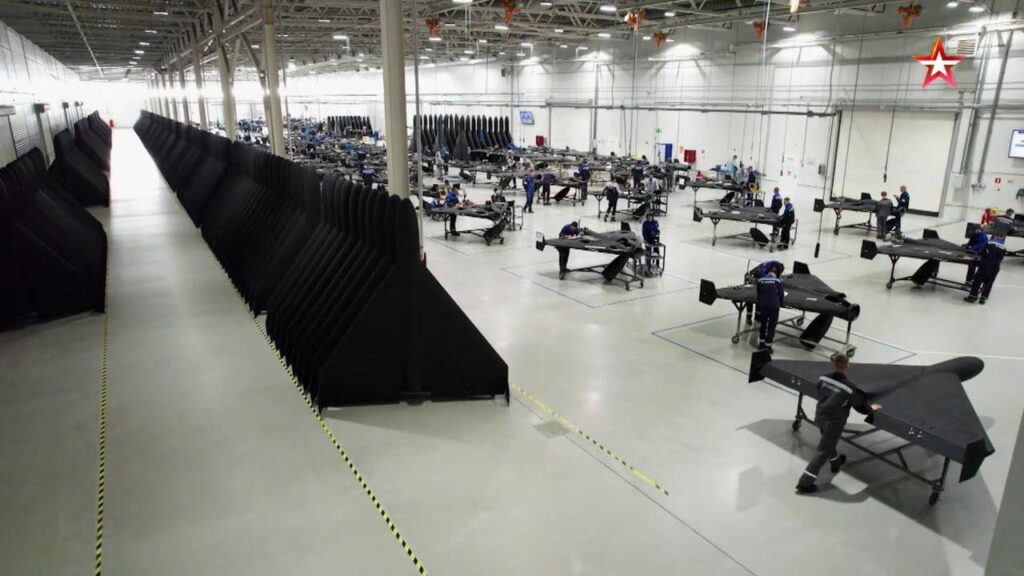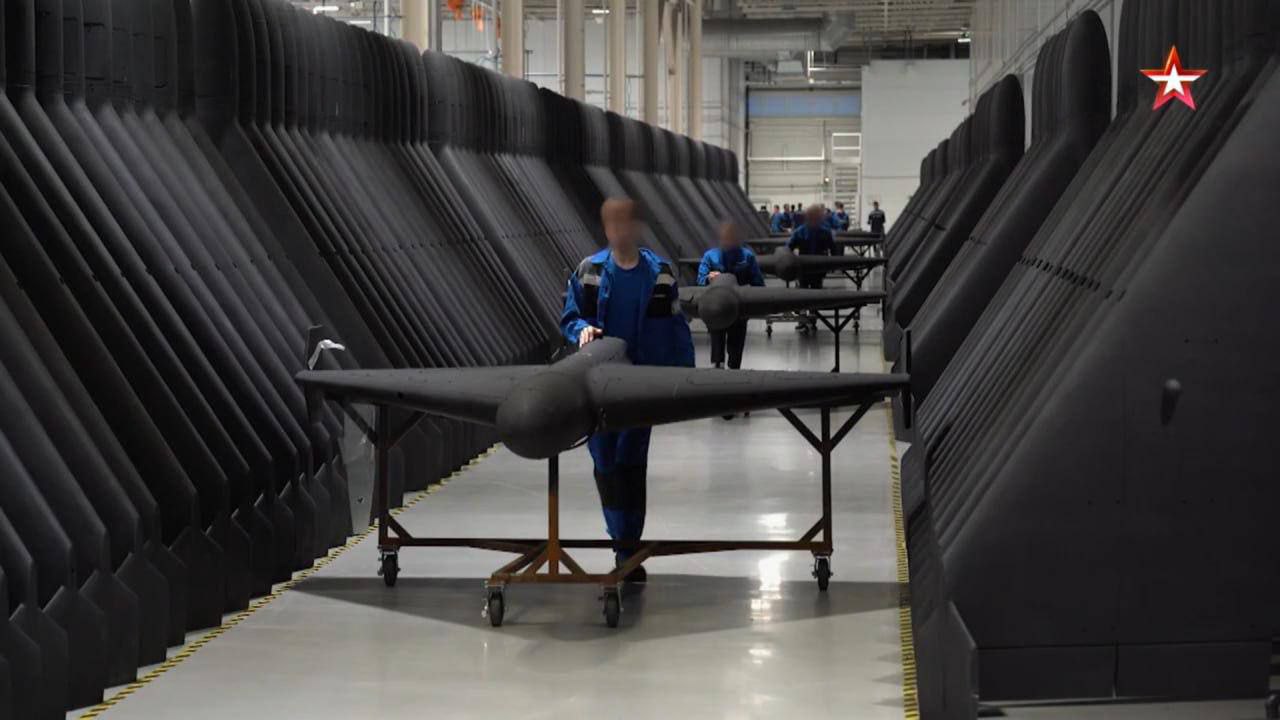Russia has released two new propaganda videos showcasing its growing drone warfare capabilities—both focused on the Geran-2 suicide drones, the Russian version of Iran’s Shahed-136. The videos, aired by Russian state media on 14 July, offer a chilling look into Moscow’s drone production and deployment—and signal a shift toward mass-scale aerial warfare.
The timing of the videos coincides with a sharp escalation in Russia’s drone attacks on Ukraine. On 9 July, Moscow launched its largest single-day aerial barrage of the war, firing 741 drones and missiles in one night.
Analysts now warn that Russia may soon be capable of launching 1,000 to 2,000 drones per day, aiming to saturate Ukraine’s air defences and wear down Western military support. The strategy is simple: overwhelm with volume, exploit cost asymmetry, and stretch Ukrainian and NATO resources to the breaking point.
Inside an underground drone factory
The first video, broadcast via Zvezda, takes viewers inside the Yelabuga factory in Tatarstan. Located more than 1,300 km from Ukraine, the facility reportedly produces over 5,000 Geran‑2s a month, with 18,000 built in the first half of 2025.
Satellite imagery and facility layout suggest large sections of the plant are underground, enhancing its resilience to long-range Ukrainian strikes. The video highlights on‑site foundries, assembly lines, electronics shops—all sealed beneath reinforced structures.
Ukrainian drone strikes: Deep and determined
Despite its distance from the front lines, Yelabuga has been repeatedly targeted by Ukrainian drones:
- April 2024: Strikes injured 12 people; fires were reported in a dormitory.
- May–June 2025: Additional attacks, including one that killed a worker, prompted limited local damage.
Yet, despite the assaults, production appears largely unaffected, with officials insisting the plant continues to operate “stably.”
Mobile launches from US-made trucks
The second video reveals drones launched from Dodge Ram 1500 pickup trucks—vehicles that seem American-made and potentially obtained in violation of Western sanctions. This mobile launcher method signals a shift toward faster, more flexible deployment and increased launch density.
A costly war of attrition
Geran‑2 drones are designed for long-range strikes:
- Length: 3.5 m
- Wingspan: 2.5 m
- Weight: ~200 kg
- Warhead: 50 kg
- Range: Up to 1,800 km
- Speed: Up to 300 km/h
Despite their relatively low cost—$35,000–$50,000—they place significant strain on Ukrainian defences. A single Patriot interceptor, by contrast, costs over $5 million.
Ukraine reported this week that it had shot down its 30,000th Shahed drone, based on serial number analysis of drone fragments.

Why it matters
- First video reveals industrial-scale drone manufacturing, likely underground, resilient to attack.
- Second video highlights mobile, adaptive launch tactics using Western vehicles.
Together, they underscore a clear message: Russia is not just sustaining its drone campaign—it is scaling it.
Read also
-
German general warns Ukraine faces Russian drone increase from 500 to 2,000 nightly while Kyiv develops special drone interceptors
-
Russian follow up strikes delay Ukrainian rescuers who rush to put out fire after deadly drone attack
-
Ukraine just solved the hardest math problem in modern air defense – with a 1970s German gun




